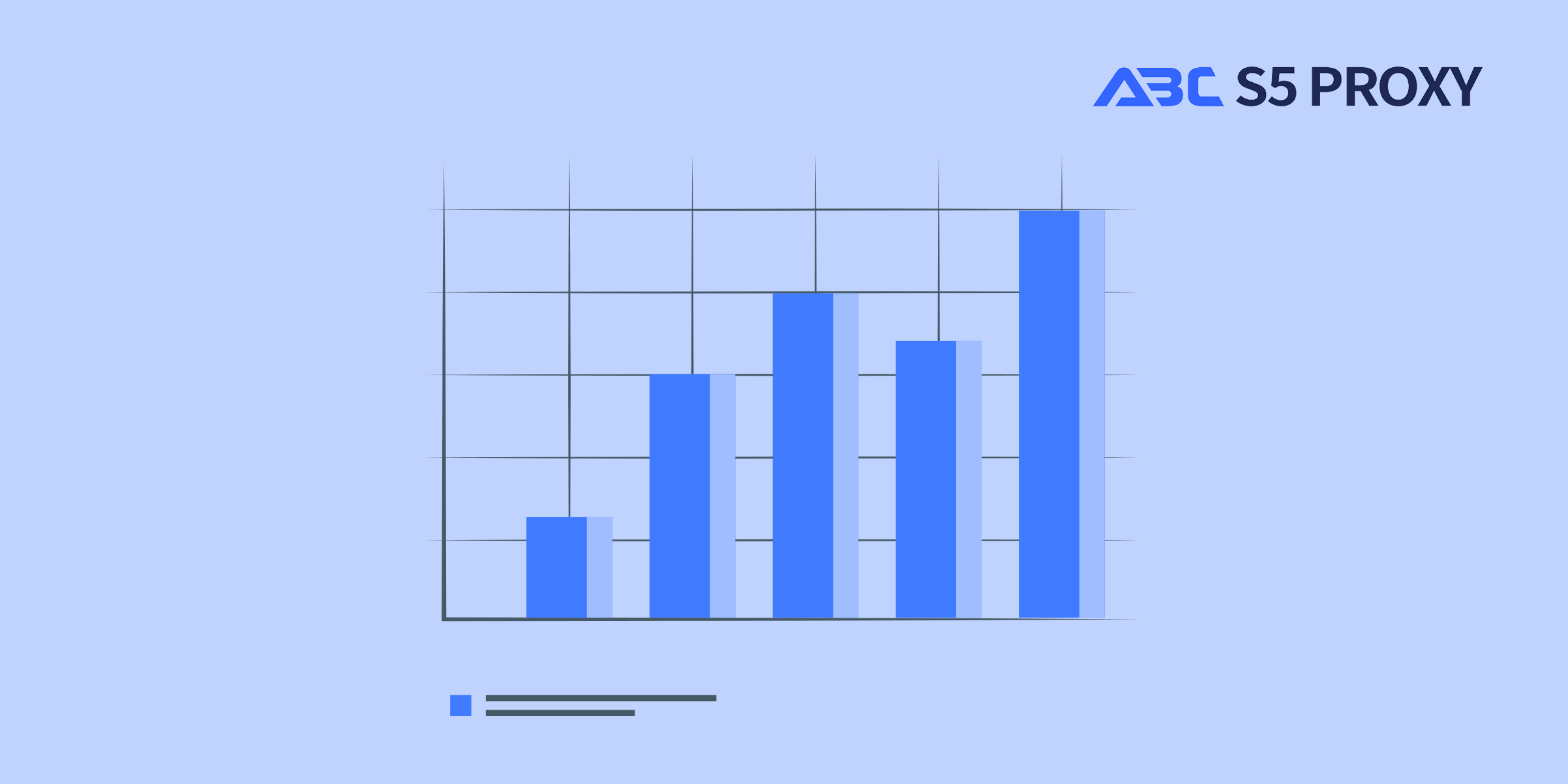Residential Proxies
Allowlisted 200M+ IPs from real ISP. Managed/obtained proxies via dashboard.

Proxies
Residential Proxies
Allowlisted 200M+ IPs from real ISP. Managed/obtained proxies via dashboard.
Residential (Socks5) Proxies
Over 200 million real IPs in 190+ locations,
Unlimited Residential Proxies
Use stable, fast, and furious 700K+ datacenter IPs worldwide.
Static Residential proxies
Long-lasting dedicated proxy, non-rotating residential proxy
Dedicated Datacenter Proxies
Use stable, fast, and furious 700K+ datacenter IPs worldwide.

Web Unblocker
View content as a real user with the help of ABC proxy's dynamic fingerprinting technology.
Proxies
API
Proxy list is generated through an API link and applied to compatible programs after whitelist IP authorization
User+Pass Auth
Create credential freely and use rotating proxies on any device or software without allowlisting IP
Proxy Manager
Manage all proxies using APM interface

Proxies
Residential Proxies
Allowlisted 200M+ IPs from real ISP. Managed/obtained proxies via dashboard.
Starts from
$0.77/ GB
Residential (Socks5) Proxies
Over 200 million real IPs in 190+ locations,
Starts from
$0.045/ IP
Unlimited Residential Proxies
Use stable, fast, and furious 700K+ datacenter IPs worldwide.
Starts from
$79/ Day
Rotating ISP Proxies
ABCProxy's Rotating ISP Proxies guarantee long session time.
Starts from
$0.77/ GB
Static Residential proxies
Long-lasting dedicated proxy, non-rotating residential proxy
Starts from
$5/MONTH
Dedicated Datacenter Proxies
Use stable, fast, and furious 700K+ datacenter IPs worldwide.
Starts from
$4.5/MONTH
Knowledge Base
English
繁體中文
Русский
Indonesia
Português
Español
بالعربية

Screen scraping is a technique used in the world of web data extraction, where a program or script extracts data from websites. It essentially simulates human interaction with a web page to retrieve information. In this blog post, we will explore what screen scraping is, how it works, its applications, challenges, and legal considerations.
Screen scraping involves parsing the HTML of a web page to extract data, typically using automated tools or scripts. The process usually entails fetching the web page, locating the desired data within its HTML structure, and then extracting and formatting that data for use in another context.
When a screen scraping program accesses a website, it sends an HTTP request to the server hosting the site just like a web browser does. The server responds by sending back the HTML code of the webpage. The scraping program then processes this HTML code to locate and extract the desired data, such as prices, product information, or contact details.
Screen scraping finds applications in various industries such as e-commerce, finance, real estate, and marketing. Businesses use it to gather competitive intelligence, monitor prices, track online mentions, and more. For example, e-commerce companies may scrape competitor websites to adjust their pricing strategies.
One of the main challenges of screen scraping is the dynamic nature of websites. Websites often update their layouts and structures, making it difficult for scraping tools to locate and extract data accurately. Additionally, some websites employ anti-scraping measures like CAPTCHA challenges to deter scraping activities.
The legality of screen scraping is a gray area. While scraping public data is generally allowed, scraping copyrighted or private data without permission could lead to legal consequences. It is crucial to review the terms of service of a website before scraping it and to ensure compliance with data protection laws.
To overcome the challenges associated with screen scraping, developers can use advanced scraping tools that can handle dynamic websites, employ rotating proxies to avoid IP blocking, and implement intelligent algorithms to adapt to website changes. Regularly updating scraping scripts and monitoring for changes on target websites are also essential practices.
In conclusion, screen scraping is a powerful technique for extracting data from websites, enabling businesses to gather valuable insights and automate processes. However, it comes with challenges such as dynamic website structures and legal implications. By understanding how screen scraping works, its applications, and best practices, organizations can leverage this technology effectively while staying compliant with regulations.
Featured Posts
Popular Products
Residential Proxies
Allowlisted 200M+ IPs from real ISP. Managed/obtained proxies via dashboard.
Residential (Socks5) Proxies
Over 200 million real IPs in 190+ locations,
Unlimited Residential Proxies
Use stable, fast, and furious 700K+ datacenter IPs worldwide.
Rotating ISP Proxies
ABCProxy's Rotating ISP Proxies guarantee long session time.
Residential (Socks5) Proxies
Long-lasting dedicated proxy, non-rotating residential proxy
Dedicated Datacenter Proxies
Use stable, fast, and furious 700K+ datacenter IPs worldwide.
Web Unblocker
View content as a real user with the help of ABC proxy's dynamic fingerprinting technology.
Related articles

Unveiling the Power of Ticketmaster Proxies: A Ticketing Game Changer
Discover the benefits of using a Ticketmaster proxy to secure your tickets hassle-free. Learn how a Ticketmaster proxy can help you bypass restrictions and access exclusive events with ease. Engage with our blog to unlock the secrets of securing your tickets effortlessly!

Unveiling the Magic of Screen Scraping: How It Works and Why It Matters
Screen scraping is the process of extracting data from websites. It works by mimicking human browsing behavior to access and retrieve information. Learn more about screen scraping and how it can benefit your data collection efforts.

The Top 10 Web Scraping Tools You Need to Know About
Looking for the best web scraping tools to enhance your data collection efforts? Look no further! In this article, we've compiled a list of the top 10+ web scraping tools that you can use to extract valuable information from websites with ease. From versatile and user-friendly platforms to powerful and customizable solutions, these tools offer a range of features to suit your scraping needs. Whether you're a beginner or an experienced data scientist, these tools will help you streamline your web scraping process and unlock valuable insights. Discover the perfect tool for your scraping projects and take your data extraction capabilities to the next level!